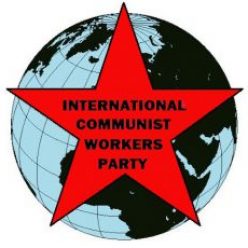
The Taihang Mountains Drama Group performing “A Hatred of Blood and Tears”
“In Changchih City [China], the main urban center of the South Shansi Highlands, residents and peasants from the surrounding villages turned out by the thousands to celebrate 1948.
“The city was decorated from one end to the other. In front of every shop a bright red flag, replete with gold hammer and sickle, proudly waved. Across the streets and alleys on all but invisible strings fluttered countless pennants of colored paper.”
This is how William Hinton begins his description of a communist New Year celebration.
“Among the attractions … was the yangko dancing. A small parade preceded the performance of each yangko team. In the lead came young men with red banners bearing the name of the club, block committee, or peasants’ association which they represented.
“Behind them came the musicians with their drums, cymbals, gongs, and pipes. Next came the acting group and then a long column of dancers. When the group arrived at a likely spot—any place where large numbers of people stood around waiting for something to happen— the dancers started to form a big circle … inside of which the actors assembled to perform the plays and skits which they themselves had written.”
Some plays were about land reform. They had characters such as the landlord, the middle peasant, the laborer and the Communist party member. Others were about the international situation and featured Chiang Kai-Shek and Kung, the Chinese Rockefeller. Music, dancing, color and outrageous costumes – typical of street theater everywhere. Chiang, for example, wore an over-the-top uniform and Kung carried a big bag of money.
Even before the founding of the Chinese Communist party, activists realized the importance of theater in educating the masses. In 1904 Chen Duxiu, who went on to become the Party’s first leader, said that “some are promoting social reform by writing new novels or publishing their own newspapers, but they have no impact on the illiterate. Only the theater can excite and reform the whole society … there is no better vehicle for social reform than the theater.”
Qu Qubai, who was briefly the second Party chief, moved into cultural work. He founded the Party’s first drama academy (in liberated territory). He sent theater troupes in large numbers to visit villages and the front lines. By the time of the festival Hinton describes, hundreds of thousands of actors and other artists were performing in the liberated areas.
The Party did not neglect more ambitious forms of theater. They were very successful in adopting the format of traditional Chinese opera for pieces like the “Red Detachment of Women.”
Can we learn from this? Yes. We can’t yet produce professional- level operas, but street theater is possible. Experience shows that as few as half a dozen committed amateurs can write and perform short skits.
At a big demonstration, music and props can easily attract an audience of 200. They can get across our Communist message as effectively as any leaflet. And if we do have a leaflet, audience members are much more likely to read it. If the troop performs five times, they’ve reached a thousand people and made the ICWP really stand out!
If you’re interested in street theater, especially if you have some experience, let us know. You can join a long tradition of using drama to spread Communism!

